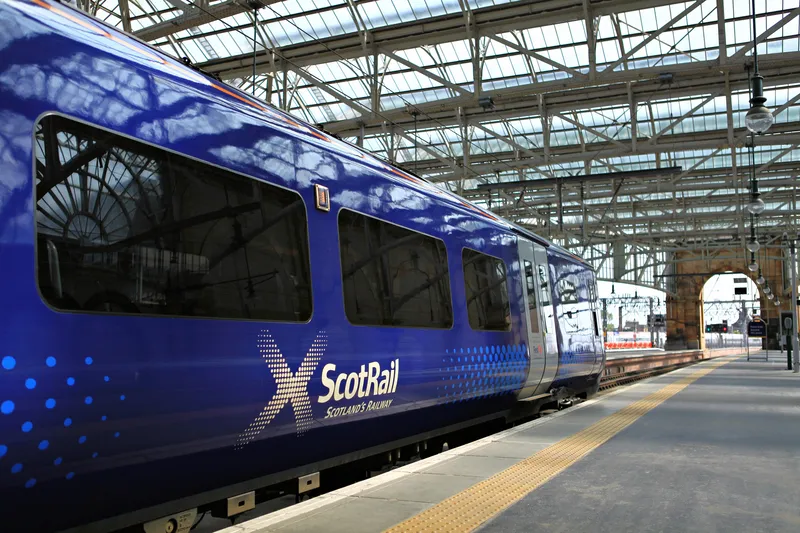The Mayor of London and Transport for London (TfL) have launched a world-leading programme to drive major improvements in safety across London's bus network, creating a six-point programme to reduce collisions and improve safety.
The programme will bring together the newest technology, training, incentives, support, reporting and transparency right across the network, contributing to TfL's work towards meeting the mayor's target of halving the number of people killed or seriously injured on the capital's
February 2, 2016
Read time: 4 mins
The Mayor of London and 1466 Transport for London (TfL) have launched a world-leading programme to drive major improvements in safety across London's bus network, creating a six-point programme to reduce collisions and improve safety.
The programme will bring together the newest technology, training, incentives, support, reporting and transparency right across the network, contributing to TfL's work towards meeting the mayor's target of halving the number of people killed or seriously injured on the capital's roads by 2020. The programme will:
Develop a world-leading bus safety standard for London, using a range of new technologies including collision avoidance systems, which utilise sensors to warn drivers of potential dangers and trigger automatic emergency braking systems, and intelligent speed adaption, which is currently being trialled on London’s buses. Other potential design innovations include improving wing mirror design and windscreen glazing to reduce the impact of any collision. The latest safety technologies and products will be developed and tested by manufacturers on London Buses throughout 2016 and incorporated into new buses delivered from September 2017 in order to help avoid and mitigate the impact of collisions involving buses.
Update TfL's bus contracts to include new safety incentives to encourage a greater focus on safety to help reduce the number of people killed or seriously injured (KSIs) on the London bus network.
Provide a UK-first incident support service for those affected by fatal or serious injuries - from April 2016, immediately after an incident has taken place, the service will be available to offer emotional and practical support and provide a single, named point of contact at TfL.
Publish additional bus collision data and make it more accessible - TfL began publishing bus safety statistics on its website in June 2014 to further improve transparency for customers and other stakeholders. As part of the Bus Safety Programme, from spring TfL will publish additional bus collision data that will break the most serious collisions down by road user group. A dedicated web page will also make information more accessible and provide graphs illustrating long-term trends, including a link to the London Collision Map, which highlights when and where bus collisions have occurred.
Provide greater transparency on bus collision investigations - For the first time, TfL will clearly set out how fatal and serious injury collisions on the bus network are investigated and the processes that are followed by TfL, the bus operators and the police. In addition, TfL will be reporting annually on the legal outcome of all fatal and serious bus collisions.
Provide a new safety training module to all 24,700 drivers - TfL continues to invest in the most stringent bus driver training in the UK. By the end of 2016 bespoke 'In the Zone' training will have been delivered to all 24,700 bus drivers in the Capital. TfL is also exploring pre-qualification testing for driver recruitment to be piloted from spring 2016.
The Mayor of London, Boris Johnson MP, said: “I'm proud that we have one of the safest bus networks in the world, but I'm determined to see it get even better. By creating this world-leading programme we will be placing an even greater focus on safety, making the most of the latest technology and bold initiatives to help keep passengers and vulnerable road users safe. Through this we will be able to make real progress towards my target of significantly reducing the number of people killed and seriously injured on our roads.”
Leon Daniels, TfL's managing director of surface transport, said: “The Capital's bus network is very safe and we are determined to take action to make it even safer. The Bus Safety Programme will examine a range of improvements, from vehicle design to bus driver training, from giving more information to the public to provision of support to those affected by serious bus incidents. We will also provide more information about bus safety and the outcomes of investigations into the most serious incidents.”
The programme will bring together the newest technology, training, incentives, support, reporting and transparency right across the network, contributing to TfL's work towards meeting the mayor's target of halving the number of people killed or seriously injured on the capital's roads by 2020. The programme will:
Develop a world-leading bus safety standard for London, using a range of new technologies including collision avoidance systems, which utilise sensors to warn drivers of potential dangers and trigger automatic emergency braking systems, and intelligent speed adaption, which is currently being trialled on London’s buses. Other potential design innovations include improving wing mirror design and windscreen glazing to reduce the impact of any collision. The latest safety technologies and products will be developed and tested by manufacturers on London Buses throughout 2016 and incorporated into new buses delivered from September 2017 in order to help avoid and mitigate the impact of collisions involving buses.
Update TfL's bus contracts to include new safety incentives to encourage a greater focus on safety to help reduce the number of people killed or seriously injured (KSIs) on the London bus network.
Provide a UK-first incident support service for those affected by fatal or serious injuries - from April 2016, immediately after an incident has taken place, the service will be available to offer emotional and practical support and provide a single, named point of contact at TfL.
Publish additional bus collision data and make it more accessible - TfL began publishing bus safety statistics on its website in June 2014 to further improve transparency for customers and other stakeholders. As part of the Bus Safety Programme, from spring TfL will publish additional bus collision data that will break the most serious collisions down by road user group. A dedicated web page will also make information more accessible and provide graphs illustrating long-term trends, including a link to the London Collision Map, which highlights when and where bus collisions have occurred.
Provide greater transparency on bus collision investigations - For the first time, TfL will clearly set out how fatal and serious injury collisions on the bus network are investigated and the processes that are followed by TfL, the bus operators and the police. In addition, TfL will be reporting annually on the legal outcome of all fatal and serious bus collisions.
Provide a new safety training module to all 24,700 drivers - TfL continues to invest in the most stringent bus driver training in the UK. By the end of 2016 bespoke 'In the Zone' training will have been delivered to all 24,700 bus drivers in the Capital. TfL is also exploring pre-qualification testing for driver recruitment to be piloted from spring 2016.
The Mayor of London, Boris Johnson MP, said: “I'm proud that we have one of the safest bus networks in the world, but I'm determined to see it get even better. By creating this world-leading programme we will be placing an even greater focus on safety, making the most of the latest technology and bold initiatives to help keep passengers and vulnerable road users safe. Through this we will be able to make real progress towards my target of significantly reducing the number of people killed and seriously injured on our roads.”
Leon Daniels, TfL's managing director of surface transport, said: “The Capital's bus network is very safe and we are determined to take action to make it even safer. The Bus Safety Programme will examine a range of improvements, from vehicle design to bus driver training, from giving more information to the public to provision of support to those affected by serious bus incidents. We will also provide more information about bus safety and the outcomes of investigations into the most serious incidents.”









